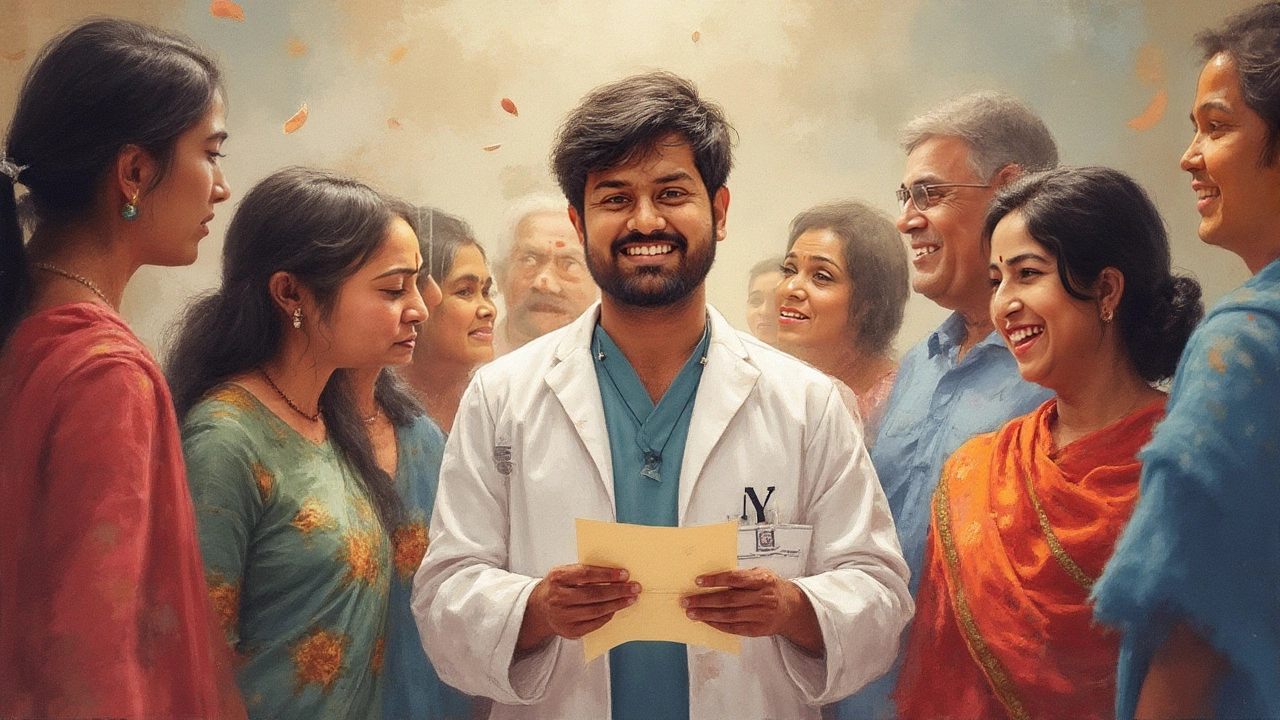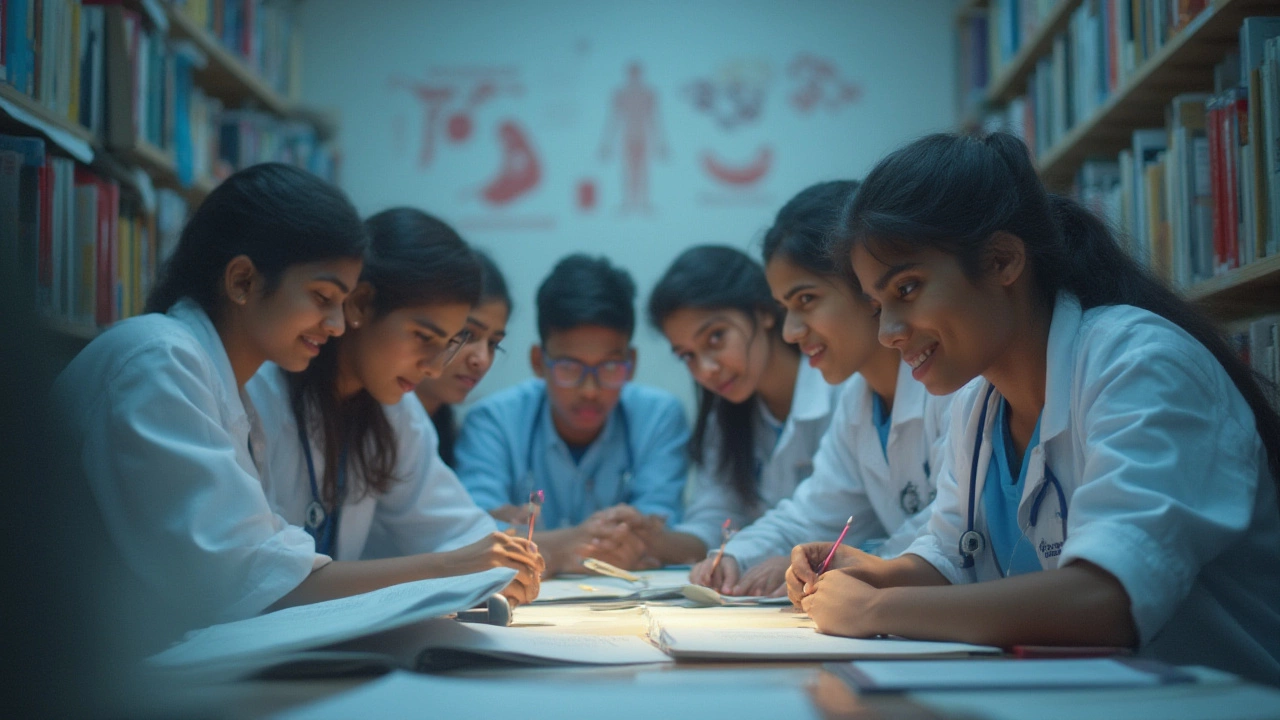Picture this: twenty thousand future doctors choking back nerves in a packed hall, calculators in one hand, energy drinks in the other, eyes glazed over from months of studying medical textbooks thick enough to knock you out. Not everyone will walk out a winner. When it comes to medical license exams, just making it to the exam room is its own battle. But which one really deserves to be called the hardest of them all?
The Contenders: Major Medical License Exams Around the World
Different countries throw different monsters at their medical grads. The obvious giant in the room is the United States Medical Licensing Examination—better known as USMLE. If you want to practice medicine in the U.S., this is the wall you must scale. It’s actually not one exam but a three-step behemoth, with Step 1 infamous for stories of despair and triumph. Russia, India, the UK, Australia, Japan—each country flexes its own complex, high-stakes test. The UK’s PLAB (Professional and Linguistic Assessments Board), Canada’s MCCQE (Medical Council of Canada Qualifying Examination), and India’s NEET-PG (National Eligibility cum Entrance Test for Postgraduates)—these are hurdles that barely give you time to breathe.
The format and content are as different as the health systems themselves. For example, the USMLE Step 1 is computer-based and drills down deep into applied basic sciences, while the PLAB focuses more on integrated clinical knowledge and faces you with practical scenarios. Japan goes tough too—the National Medical Practitioners Qualifying Exam isn’t just about clinical facts; it’s known for its focus on ethics and judgment. Australia’s AMC (Australian Medical Council) exams combine written multiple choice with in-person clinical skills testing. It’s a wild ride no matter where you live, but it’s that blend of knowledge, stamina, and clinical judgment that decides who gets to don the white coat for real.
But what makes an exam “hard”? It’s not only about the number of questions. It’s also the style, the time pressure, the expectation to make real-time clinical decisions, the need to handle the stress of years of dreams riding on a score. Pass rates can tell a story. For example, the USMLE Step 1 had a pass rate around 95% for U.S. MD students as of 2024, but it sometimes drops much lower for international grads. Compare that to the UK’s PLAB, with pass rates hovering near 61% for first attempts on PLAB 1 (2023 data). The fear factor isn’t just hype—a single digit on your results sheet can reroute your entire life’s path.
Breaking Down the USMLE: Why It Terrifies and Fascinates
If you ask American med students about the test that steals their sleep, Step 1 of the USMLE always tops the list. Before 2022, the whole world obsessed over this score; residencies picked and rejected candidates based almost exclusively on it. The pressure got so crazy that in January 2022, the USMLE Step 1 moved to pass/fail to cut back on the anxiety arms race. But anyone who thinks this made Step 1 easy hasn’t spent eight grim months poring over enzyme pathways and arcane cell mechanisms.
Step 1 usually happens after your first two years of med school, slamming you with questions about biochemistry, physiology, genetics, and microbiology. It’s not just about regurgitation—it’s about using all that info to diagnose, reason, and (if you ask the students) guess intelligently under massive time pressure. Step 2 and Step 3, taken later, go deeper into real patient care, with Step 2’s Clinical Knowledge section and Step 3’s grilling multi-day challenge. Each step tries to copy the chaos and challenge of actual practice, with dense vignettes and scenarios ripped from real hospital life.
The format throws curveballs at every turn: multiple-choice that doesn’t just have “one” right answer, but several “least wrong” ones; blocks of dozens of questions with next-to-no breaks. It isn’t about seeing who knows the most obscure fact—it’s about seeing who can think like a clinician under pressure. No matter how smart you are, if you haven’t learned how to handle mental fatigue, the USMLE will chew you up. Some studies show even seasoned test-takers see their scores drop in later blocks as the hours pile on, so pacing matters as much as knowledge.
| Exam | First-Attempt Pass Rate | Location |
|---|---|---|
| USMLE Step 1 (U.S. MD grads) | 95% | United States |
| USMLE Step 1 (International grads) | 81% | United States |
| PLAB 1 | 61% | United Kingdom |
| MCCQE Part I | 73% | Canada |
| NEET-PG | 46% | India |
| AMC MCQ | 49% | Australia |
There’s a famous story among students about someone who passed Step 1 with a stunning 99 percentile—then fainted in the corridor from sheer exhaustion. That’s how intense it gets. The content might be clinical, but the real challenge is in the mental game: can you stay sharp after 7 hours in a windowless room staring at vignettes about rare metabolic disorders?

PLAB, AMC, and the Other Challengers: Unique Obstacles Across the Globe
Step outside the U.S., and you’ll find other tests ready to knock you down a peg. The PLAB is split into two bulking parts. PLAB 1 (written) is a 180-question, three-hour run through clinical scenarios, heavy on practical knowledge. PLAB 2 jumps off the paper entirely—it’s an OSCE (Objective Structured Clinical Examination) where you interact with “patients” (actors, but try breaking character under those spotlights) and manage tricky consultation tasks. It mimics what NHS expects from its doctors, including communication, diagnosis, and emergency management. The grind is real—sink just one station and your shot at practising in the UK is over until the next round.
Australian hopefuls face the AMC MCQ, a daunting 150-question test that asks for instantly applicable clinical knowledge. Unlike some countries, Australia expects international applicants to already understand local policies, medical law, and even system quirks. Failing isn’t just about missing a few facts; it could mean you have to wait months to retake, with a backlog of competitors breathing down your neck. Then there’s the AMC Clinical Exam, which is a full-on fight with twelve clinical stations, where skills, bedside manner, and decision-making face the ultimate trial.
Canada’s MCCQE Part I also makes sure no one coasts in easy. It’s a blend of multiple-choice questions and short-answer “clinical decision-making” scenarios that stretch you well beyond rote learning. The pass rate might seem fair, but the stress is real—fail Part I, and you have to wait another half a year before you can even try Part II, where practical examinations get even more ruthless.
India’s NEET-PG shouldn’t be ignored. Just about half of all registered candidates pass on their first try, and since postgraduate medical seats are extremely limited, an average score usually gets you nowhere. With over 200,000 test-takers and fierce competition, even a percentile in the 90s might leave you seatless. This isn’t just following a syllabus—it’s a popularity contest with the highest possible stakes.
Every country’s exam has a different “gotcha.” Some focus on language, others on clinical skills, and a few demand deep memorization. But the stress, the emotion, the relentless preparation—that’s universal.
What Makes a Medical Exam “The Hardest”?
So, is it sheer volume of knowledge that makes an exam hard? Or is it time pressure, question framing, and high stakes? What about the experience of those who have faced more than one?
If you ask doctors who’ve crossed borders, many say USMLE Step 1 remains the harshest when it comes to high-stakes, high-volume, make-or-break testing. The amount of detail demanded (down to enzyme deficiencies you might never see in practice) still haunts many folks years later. But then, ask someone who’s passed the PLAB 2—they’ll tell you there’s nothing scarier than acting out a cardiac arrest on a fake patient, an examiner watching your every move for a twitch of hesitation.
Fatigue is a real enemy. Most licensing exams take a full day, some even longer, testing not just intellect but resilience. In one candid survey of U.S. med graduates from 2022, about 32% admitted they felt some level of burnout heading into their board exams—there’s nothing abstract about that kind of pressure. Stakes can’t be higher: a poor score means lost residency chances, wasted years, and sometimes, the end of a dream that began in childhood.
The next layer? Format tricks. USMLE tests love their best-of-five questions with half the options “almost right.” PLAB and AMC expect you to handle curveball cases with barely any context. Sometimes, the hardest part is keeping your head when you know every tick of the clock brings you closer to success—or disaster. There’s no magic bullet, but those who walk away on top usually have one thing in common: adaptability, not just memorization.

Tactics for Beating the Odds: Real-World Strategies for Surviving Tough Exams
No amount of pep talks can make a licensing exam “easy.” But there are ways to train smarter, not just harder. If you’re gunning for the USMLE, active recall and spaced repetition work wonders—think flashcard apps, rapid-fire quizzes, and self-made mnemonics that stick better than bland reading. Many top scorers set up “hours studied” logs: a simple spreadsheet that tracks every minute, turning motivation into measurable progress. One survey published in Academic Medicine in 2023 found that med students who used at least three full-length practice tests scored, on average, 12% higher than those who didn’t.
Don’t neglect your mental game. Burnout creeps in when life gets too lopsided. Schedule breaks, even mini power naps, and trick your brain into focus by switching up study environments. Some students form “study squads”—small groups where everyone holds each other accountable, swaps tricky questions, and vents before it all boils over. It’s not just about brains; it’s about endurance.
If you’re facing PLAB or AMC exams, go heavy on simulation practice. There are full mock stations set up in tutoring centers, and practicing with real human actors (even if it’s just a cousin playing “chest pain”) exposes your gaps before they become real-world disasters. MCCQE and NEET-PG favor speed and flexibility—so for them, mastering test-taking strategies like rapid elimination and educated guessing can rescue points when you’re stuck.
The biggest tip? Keep perspective. Medical exams are brutal—but every year, new doctors survive, thrive, and go on to heal. It’s about building habits that last: treat every test like preparation for a career, not just an obstacle. So, whether your enemy is USMLE’s science labyrinth, PLAB’s real-world roleplay, or NEET-PG’s grueling competition, remember: the difference between passing and failing starts months before you even open the test booklet.
